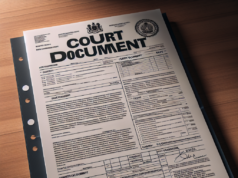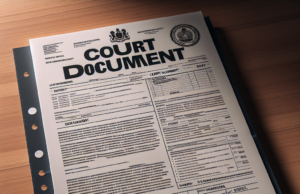
TEXAS CHILD CUSTODY LAWS & REGULATIONS UPDATE 2023
A DECADE OF CHANGE: AN OVERVIEW OF TEXAS’S CHILD CUSTODY LAWS AND REGULATIONS TIMELINE (2013-2023)
Texas’s dedication to the well-being of children and parents involved in custody proceedings is evident in the changes made to its child custody laws over the past decade. The following key updates from 2013 to 2023 highlight Texas’s commitment to adapting its child custody regulations:
2013 – Child’s Best Interests:
– Texas reaffirms the child’s best interests as the primary consideration in custody determinations.
2014 – Parenting Plans Requirement:
– Introduction of mandatory parenting plans outlining custody arrangements, visitation, and decision-making responsibilities.
2015 – Shared Custody Emphasis:
– Emphasis on shared custody arrangements to promote the active involvement of both parents.
2016 – Child’s Preferences Considered:
– Courts begin considering the child’s preferences when determining custody arrangements.
2017 – Domestic Violence Awareness:
– Texas starts considering domestic violence history as a significant factor in custody decisions.
2018 – Mental Health Assessment:
– Introduction of mental health assessments when relevant to parental fitness and child well-being.
2019 – Technology’s Role in Co-Parenting:
– Texas addresses the role of technology in co-parenting arrangements and its effects on children.
2020 – Relocation Guidelines:
– Establishment of guidelines addressing parental relocations and their impact on existing custody arrangements.
2021 – Co-Parenting Education:
– Requirement for parents to attend co-parenting education classes to enhance communication and cooperation.
2022 – Child’s Safety and Well-Being:
– Texas strengthens its focus on the child’s safety and overall well-being in custody determinations.
2023 – Encouraging Child-Focused Agreements:
– Promotion of child-focused agreements to ensure the child’s needs remain at the forefront.
These updates underline Texas’s commitment to creating a supportive and balanced environment for children and promoting effective co-parenting relationships through its evolving child custody laws.
Guide to Child Custody Laws in Texas
If you and your child’s other parent are splitting up, you may need to examine the child custody system closely to give yourself the best chance of getting the type of custody you want.
Child custody laws in Texas are slightly different from those in other states, and if you are a Texas resident, you may want to understand the differences in terminology and what each type of custody means.
This guide will help explain child custody laws in Texas, which involve one or both parents having “conservatorship,” or custody, over their child.
Joint Managing Conservatorship
The kind of custody arrangement preferred by Texas courts is for both parents to share conservatorship of their children.
Child custody laws in Texas make it clear that this is considered the optimum outcome in most cases—in fact, it is a presumption of the court that this kind of custody is in the best interests of the child.
Many parents are able to come to a joint parenting plan and agreement that can lead to a joint managing conservatorship.
If you feel that a JMC is not in the best interests of your child, child custody laws in Texas allow you to rebut that in court.
Under a JMC, your child will, in many ways, be parented as if you had never divorced: both parents will share responsibilities for parenting, and in the case of a medical emergency both parents have influence over their child’s medical care.
In a JMC situation, both parents have decision-making power for their child.
JMX does not imply total equality in terms of which parent has possession of the child.
This is decided by the court, and primary possession is usually awarded to one parent or the other.
Sole Managing Conservatorship
If one parent has successfully rebutted a joint managing conservatorship, the parent will be appointed as a child’s sole managing conservator.
SMC means that only one parent can make critical decisions for the child, including decisions about schooling or healthcare.
Sometimes, sole managing conservatorships come about because one parent does not wish for conservatorship.
Other times, because child custody laws in Texas consider a JMC to be generally in the best interests of the child, it can be quite difficult to obtain an SMC.
You may wish to speak to a lawyer if you are seeking sole custody of your child.
Possessory Conservatorship
Most of the time, whichever parent does not have primary possession of the child will be awarded visitation rights.
Child custody laws in Texas specify a standard possession schedule that most parents can use to split possession of their children.
This schedule is quite complicated, and you may wish to look it over with your ex-spouse or a lawyer to better understand it.
The parent who has possession of a child temporarily but is not a primary custodial parent is called the possessory conservator.
If you are a possessory conservator, you maintain basic decision-making ability when it comes to activities during the time you have possession, as well as decision-making abilities in an emergency situation where your child needs immediate care.



























